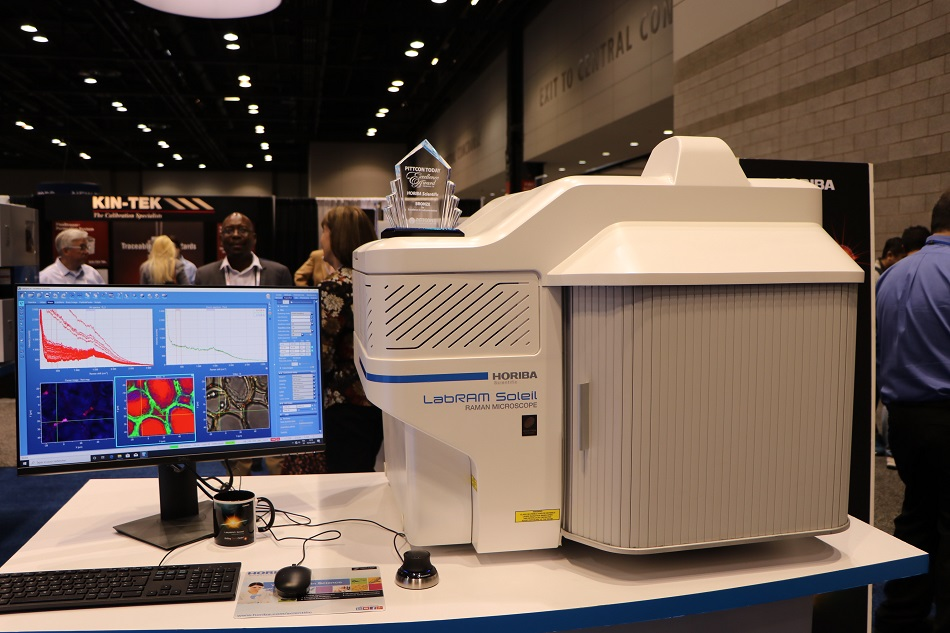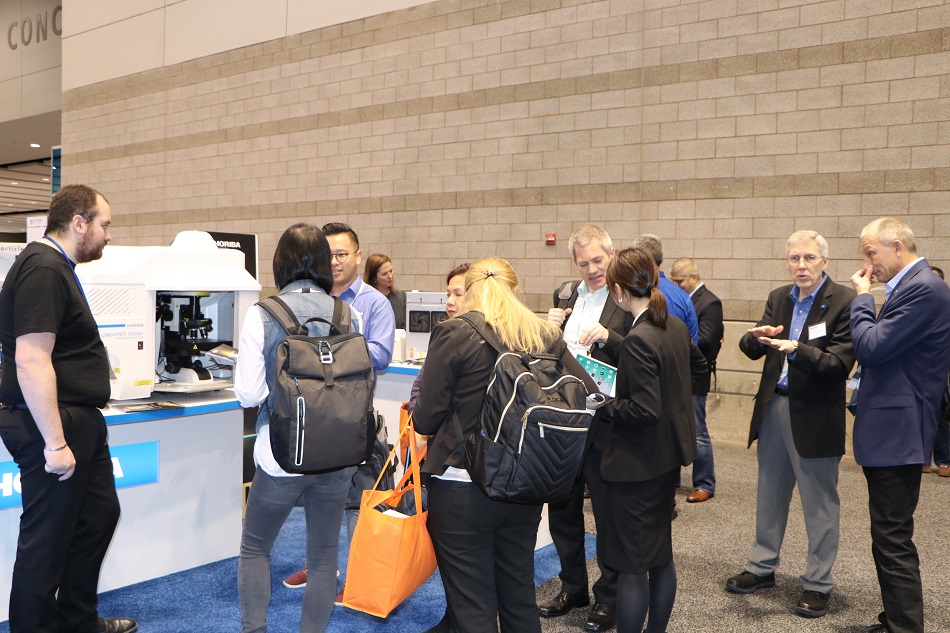
In this interview, AZoM talks to Thibault Brulé, of HORIBA, about the applications and benefits of HORIBA's raman microscope, the LabRAM Soleil.
Can you tell us about the new product that you are launching at Pittcon?
Our new LabRAM Soleil Raman Microscope is full of many innovations in both the hardware and software, and it combines all the capabilities of research and development from the 200 years of innovation in the company. It combines everything together in one system, from fast imaging to automation, which is now part of the system. We can do raman microscopy for anyone who wants to do chemical identification.
When you developed the LabRAM Soleil, was there a gap in the market?
We developed the LabRAM Soleil to, first, open new doors to the people with whom we hope to work and, second, to enable us to carry out chemical characterization processes with their samples and products. With this new LabRAM Soleil system, we are able to achieve things that were not possible before, ranging from pharma, polymer, materials and microplastics applications. The LabRAM Soleil makes everything possible.
HORIBA LabRAM Soleil
With what is on the market, what makes the LabRAM Soleil different?
All the new fast imaging methods. We've made a revolution regarding fast imaging with this system because everyone wants to get their information very quickly. In fact, with this new LabRAM Soleil, you are able to do fast mapping based on the new patented solution that we have if you don’t have a lot of signals. Looking at the contrast of the video image, we base where we want to map and where we don’t want to spend time on characterization on the segmentation of the video image.
Additional to fast imaging and mapping, what are the other features that make LabRAM Soleil brand new and exciting?
With LabRAM Soleil, it's a fully automated system, with class-one laser safety. Anyone can use it anywhere and you can do Raman really easily. You just have to close the door and make your measurements and everything is driven by the software.
We have also a lot of innovation elsewhere, too. We have a new way to scan and do the mapping. You no longer have to move the sample to scan the laser on a very large array on the sample, and we also have a lot of improvements in terms of throughput. We did a lot of developments to obtain and to use a very high reflectivity on our direct mirrors that we have in this machine. We now have more than 95 percent of reflectivity from UV to infrared on all mirrors, so it's a fully automatic system that can work for all applications very easily with very high sensitivity.
How can users achieve the ability to observe samples in different modes? And why is this important?
With all the patented solutions that we have inside now, we are able to probe every sample very easily. That's very useful to researchers because they can now spread into new applications. For example, it becomes very easy to identify different polymorphic phases in active molecules in pharma or for polymers, and you can do that very quickly. Because users are able to do this kind of work very quickly due to the high throughput and the capabilities of filtering at very low frequency, we can achieve some measurements that were before now just point spectra. We can now do mappings and see the distribution of the different compounds.
Can you tell us more about the different applications that will benefit from the ability to observe samples in different modes?
We can now do a lot of analysis on particles too, for instance, on microplastics. Microplastics can be improved based on the high-quality microscope; in our system, this is the Nikon base microscope. We can do very high-quality imaging and discriminate where the particles are and where there is nothing, and do measurements on the particles and identify the microplastic particles in particular.
It's a very big environmental issue at the moment, and it's very important to be able to control that. With this LabRAM Soleil, it becomes very easy based on all the microscopic capabilities we have because of the Nikon microscope that we have in our system.
Can you tell us about the SmartSampling™ technology that was added to the LabRAM Soleil and what benefits this will bring to the product?
SmartSampling™ technology is based on a contrast analysis of the video image. The idea is to segment the video image based on the contrast to highlight the points where the contrast is more important, allowing users to not spend a lot of time where there is homogeneous contrast. The idea behind this is to speed up the imaging and to find a new way to make smart imaging based on this smart assembling of the area.

LabRAM Soleil
It has really improved the market because, in applications like life sciences for example, where you need long acquisition times of more than one, two, or three seconds per point, users would spend days on this if they used classical point mapping with a classical Raman microscope.
With these mass sampling technologies, now you can have a first preview of your map in just a few minutes. Then, maybe 20 minutes to half an hour, you can get a very high-quality image because it is based on the contrast of the video image. It has really improved quality and you can have very quick results compared to what is possible with a classical point map. You can run up to 100 times faster than before for all types of imaging.
An advanced automation time is a part of a lot of these particular products. Can you tell us how the LabRAM Soleil will work hand in hand with advanced automation?
With the LabRAM Soleil, everything is automatic. We have motors everywhere, switching from one laser to another to select the laser power that we want on the sample. We also have the capability to do auto-alignment of the laser beam to ensure that everything is well aligned and will have the highest throughput possible.
Additionally, we have the capability to make measurements very quickly as it's motorized, as well as being able to align the beam where you want on the sample without moving it. It's very useful and it's automated.
All of this automation helps us to improve the robustness of the system and to keep very user-friendly. Based on that, it's also easier to maintain, because everything can be done in a remote station. You don't have to ask someone to come in because everything can be done remotely.
The LabRAM Soleil meets customer-specific needs. Why is it important that it was designed for customer needs?
All the developments have come from user needs that we’ve been made aware of. We have spent the last 10 years developing the system just to be sure that it will answer all the questions and all the needs of the users to improve what they can do and experience. Users will really have a huge experience now with the LabRAM Soleil.

LabRAM Soleil and its Pittcon Award
We also carried out a lot of developments in both the hardware and software and it is now all more user friendly. An example of these ease-of-use developments is the inclusion of a lot of apps that can be used as on a smartphone. In our software, we have some apps dedicated to specific applications just to help the users work very easily with the system. There are also some apps like the EasyImage™ app, which is an app that makes mapping fairly easy for anyone who wants to use Raman and get good results quickly.
What does the LabRAM Soleil solve in the applications that you told us about earlier? Are there any new doors that it can open for research and scientific discovery?
We have a lot of doors that have opened because of the fully automatic and achromatic system. For instance, in different applications like in pharma, polymers, materials, and material analysis. In materials, we can now do photoluminescence and ultra-low frequency or Raman measurements very quickly and easily with very high throughput.
We can also reach a low frequency just by moving the edge filter on which the laser is reflected because it’s motorized. Just by moving it slightly, we can now reach down to 25 wavenumbers in the spectrum with very high throughput. This is very useful for pharmaceutical companies or polymer companies.
Also, users want to analyze the polymorphic phase of their products too. They can now do it very quickly, very easily and in a standard configuration, which means no more costs and also that they can go very, very quickly and do mappings instead of just spectra.
Why did you decide to launch this product at Pittcon?
We decided to launch this product at Pittcon because of the strength of this event and the fact that it gives a worldwide view of the market. Pittcon is really a very good way for us to be seen everywhere and to touch everyone, not only in the North American market but also in the European and Asian markets that come to Pittcon and are able to discover this new product.

LabRAM Soleil demonstration at Pittcon
Why are events like Pittcon important for you as a company and all of your products?
All events in the scientific markets are important for us, like Analytica in Europe or JASIS in Japan. So, in fact, the LabRAM Soleil started this world tour in Pittcon this year, but we will also have some different booths and some exhibitions all over the world in the coming years, from Europe to Asia. We'll also have ICORS during the summer, which is the most important conference in Raman spectroscopy, as well as others like SciX in the US at the end of the year.
About Thibault Brulé
 After graduating from his M.S. at the University of Technologies of Troyes, Thibault Brulé completed his Ph.D. at the University of Burgundy and followed with a Post-Doctoral fellowship at the University of Montreal. His research concerned proteins in blood characterization based on Dynamic Surface Enhanced Raman spectroscopy. He applied also this technique on cell secretion monitoring. Since 2017, he acts as Raman Application Scientist for HORIBA in France.
After graduating from his M.S. at the University of Technologies of Troyes, Thibault Brulé completed his Ph.D. at the University of Burgundy and followed with a Post-Doctoral fellowship at the University of Montreal. His research concerned proteins in blood characterization based on Dynamic Surface Enhanced Raman spectroscopy. He applied also this technique on cell secretion monitoring. Since 2017, he acts as Raman Application Scientist for HORIBA in France.
Disclaimer: The views expressed here are those of the interviewee and do not necessarily represent the views of AZoM.com Limited (T/A) AZoNetwork, the owner and operator of this website. This disclaimer forms part of the Terms and Conditions of use of this website.